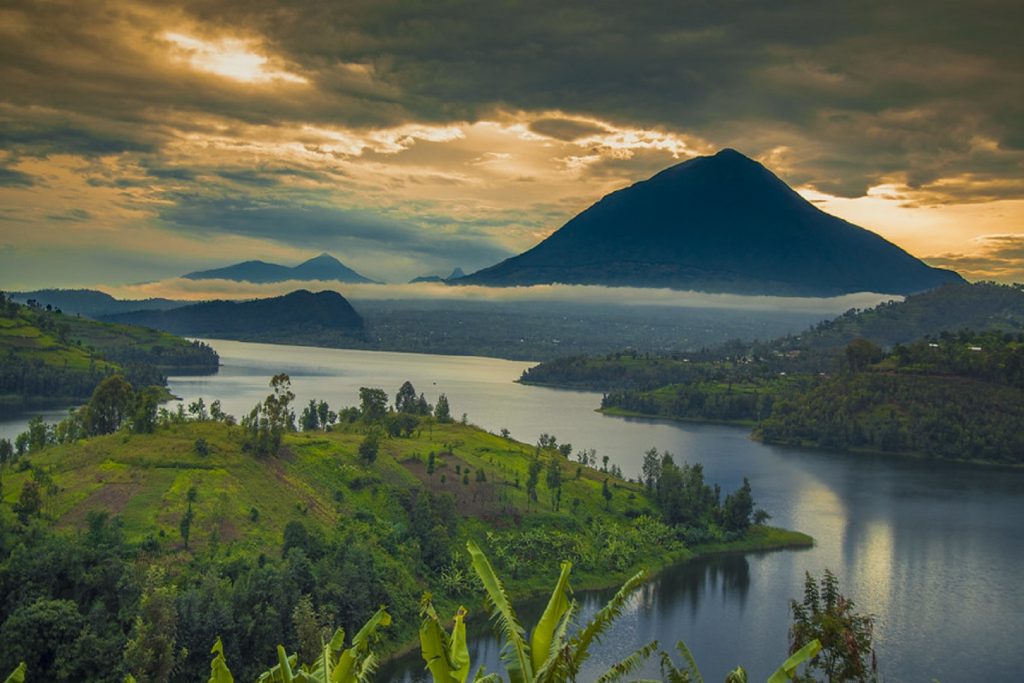
A view of Mount Muhabura with Gahinga and Sabinyo in the background
Mgahinga climate is influenced by its location, lying in between the extinct volcanoes in the Virunga Mountains on the border between Rwanda and Uganda. That is, between Muhabura and Sabyinyo, and is the smallest of these three, such this piece of nature that excites all the sense in you as you feel the breeze from the three volcanoes. The climate in Mgahinga Gorilla National Park is mild to cold and wet sitting at an altitude of 2,227-4,127m of above sea level; the park is the highest place in Uganda 9hrs dedicated to penetrating through grassland and montane forest vegetation. BOOK NOW
Mgahinga Gorilla National Park is in hilly areas with a high altitude of 2,227-4,127m or 7,306-13,540ft such this makes Mgahinga the coldest destinations in Uganda. During the day, it goes on average 20°C/68°F, rising in the evening to 9°C/48°F such this provides cool equatorial climate with very pleasant and cool weather. Temperatures fall around 6.5°C for each 1,000m you climb as or 3.5°F per 1,000ft, the lower altitude range is the area most visited by tourists. Due to its seclusion and cold weather, the park receive rain fall over the year! Nevertheless, it tends to be less rainfall in December to January, while June and July receive the least amount of rain. I guess being on the equator it doesn’t make much difference whether it’s winter in the northern hemisphere? Are there any cooler months, or a hot or rainy season it’s best to avoid?
During the rains, the park is often covered in mist and the air is always damp where hailstorms are common. However the conditions are more difficult and the rainy season offers better scenic views than the hazier dry months.
